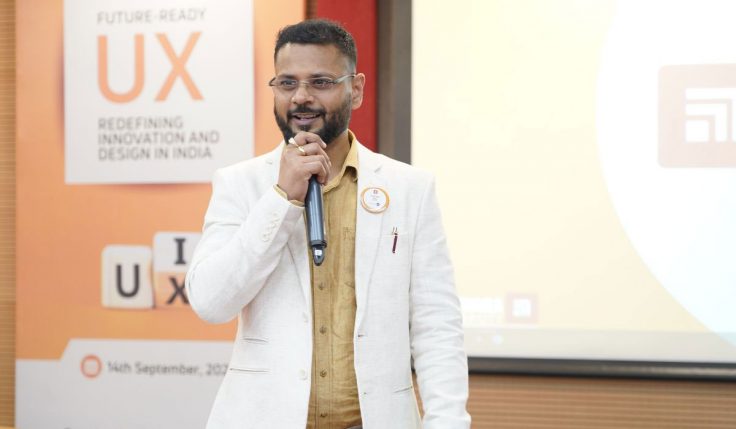Leadership and Innovation: We all know the good or bad product and service design when we come across one. There are businesses like Amazon and Apple that have laid a strong design foundation as a part of the organizational culture and they have been rewarded well for it by financial markets. It is not easy however to continuously pursue and evolve the business design. Sooner or later competitors catch up but to stay ahead of the curve continuous learning & prototyping, staying user-centric and rewarding employees for continuous design evolution are important design leadership principles. Most organizations have recently started asking questions about good design. How does good design lead to business performance? How do measure the value of design? How do investments in design correlate to good business? How do organizations that believe in good design culture create processes that constantly create and evolve design practices?
Leadership and Innovation: Introduction
In today’s world, the aspirations of CEOs are high when it comes to designing better products and services for a promising future and better stock market performance. At the same time, it is getting more difficult to achieve these high ambitions and goals. McKinsey recently did an analysis by speaking to 300 public listed companies to understand the value they place on design and the effect it has on their performance. McKinsey measured the design thinking of these organizations by creating a design index that measures the impact of design actions on the financial performance of the organization in terms of revenue and shareholder value. As per the research, McKinsey discovered that companies that performed in the top quartile of their respective industry have a strong correlation between design and financial performance. These top quartile organizations on average achieved 32% higher revenue growth and 56% higher shareholder returns versus their peers. To lay the foundation of a winning business McKinsey created a four-cluster framework that measures good design. Before studying the framework we should try and understand what design thinking in an organization entails.
Also Read: How can Design Lead us to A Better World Through Clear Energy Systems
Innovation Leadership
Design thinking is a mindset and a structured approach that allows organizations to leverage data science of products or services they have previously created, understand the gaps but come up with completely different and unique ideas vs what existed previously with the help of design thinkers. With cross-collaboration across departments, these organizations test and iterate through these newly created ideas and come up with a final product or service that the customer values and hence create a larger return on investment vis-a-vi the companies that don’t practice design thinking principles.
At one of the design thinking conferences, Jason Wild, Senior Vice President, SalesForce gave an interesting analogy. He said that some large organizations become like whales. When whales die it takes 20-40 years for them to reach the sea bed and in the process, the water ecosystem feeds off them. Similarly, there are people in the business ecosystem that convince large organizations that they are creating value but in reality, they are only making non-value-added improvements. Salesforce did a design assignment with Bajaj Corporation’s non-banking financial institution. Bajaj wanted to create a deeper relationship with its customers vs the banking institutions. Salesforce helped them get closer to the voice of the customer by packaging raw data into hard insights for the company to understand the customer pain points. These insights were direct and blunt but true nevertheless. Salesforce then designed an experiment at Diwali where, when all the banks were closed, Bajaj rolled out a loan scheme to deepen the relationship with its customers. This added value for the customers, helped Bajaj achieve its business objective of strengthening the bond with its customers. But it allowed Bajaj to achieve something more than business results. The experiment was designed not in silos else it would have never succeeded but with cross-departmental assistance and most importantly the leader of the organization was completely involved in the experiment. This design exercise was more profound than just changing Bajaj’s products and services outcome for financial yields. It transformed the experience of people who were involved in the organizations.
Creativity and Innovation in Leadership
McKinsey’s design framework suggests that to be a successful design thinking organization you need four elements. First, design action should be based on more than a feeling. It should be backed by data and hence the recommendations should be more concrete. Second, design is more than a department. It is everyone’s responsibility. The organization can’t practice a strong design philosophy if the relationship in different departments is antagonistic. Organizations should de-emphasize design departments and elevate designers and place them into cross-functional teams. Designers alone can’t solve business problems by themselves and neither can business leaders. Thirdly, good design practices are more than just a phase. It is an iterative process, even after launch. Fourth, it is more than just about one product or service. One launch becomes the starting point for the next product roll-out. It is important to study the previous idea & also look outside the company to understand the challenges and the benefits but the creative possibilities could be significantly different.
The complexity of large corporations is accelerating and mostly these complexities lead to the creation of clumsy tools vs structured design approaches. Unarticulated needs don’t show up in a one-off survey. To revitalize, the organization needs to democratize design innovation, and change the lens of the internal conversation to make truly extraordinary products & services.






